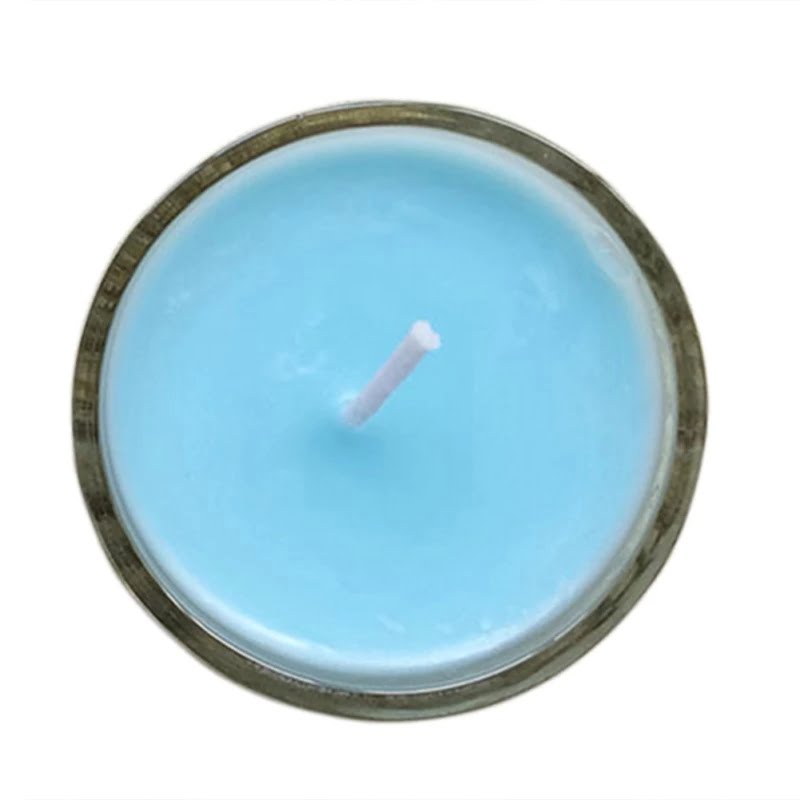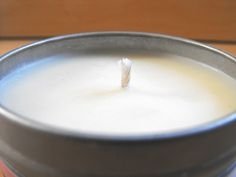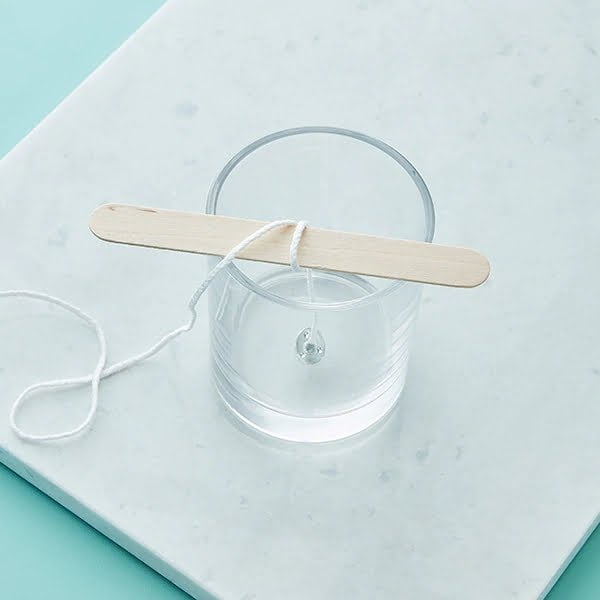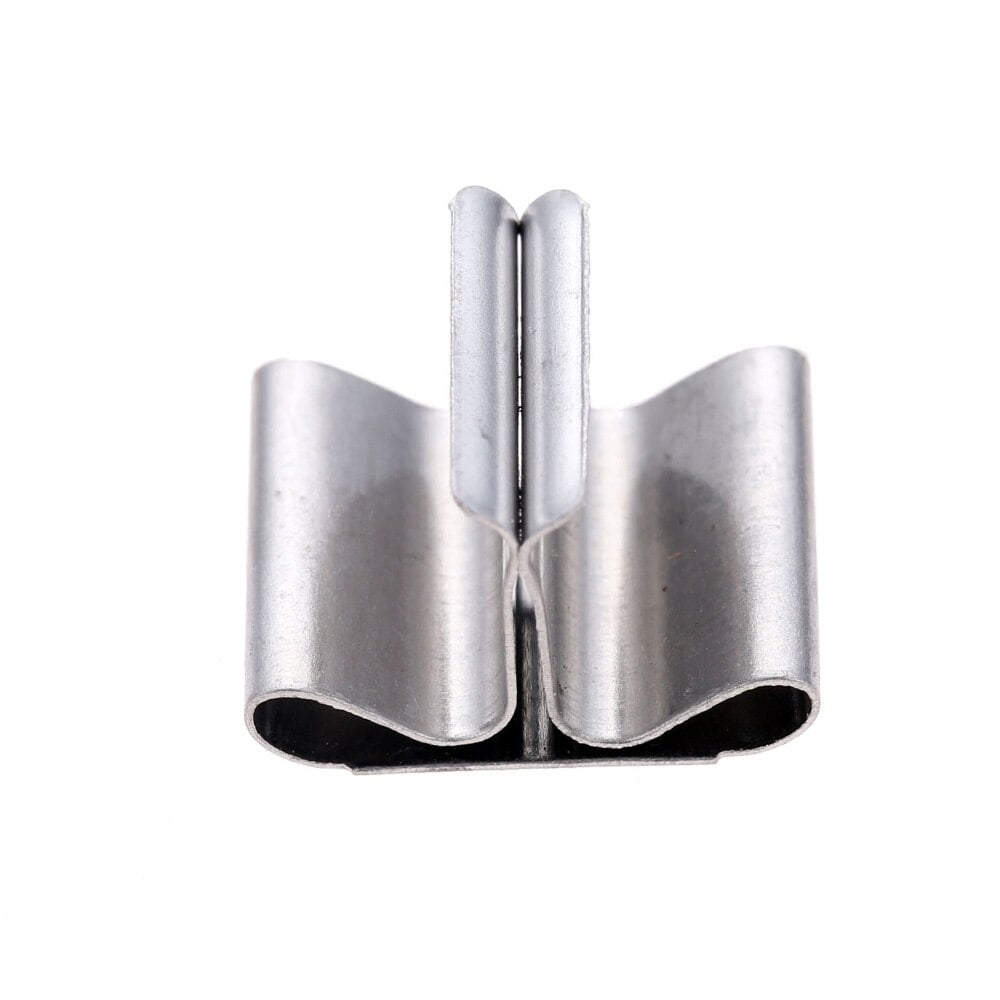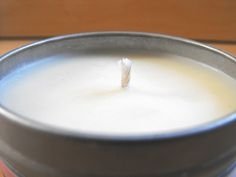Candle making is a craft that has captured the attention and creativity of people for centuries. The glowing flame and captivating aroma of a handmade candle can instantly transform any space into a cozy and inviting haven. But have you ever wondered about the ingredients that go into creating these stunning works of art? In this article, we will delve into the fascinating world of candle making ingredients.
At the heart of every candle lies wax, the essential component that gives candles their shape and provides fuel for the flame. But not all waxes are created equal. Different types, qualities, and sources of wax can greatly impact the final product. We will unravel the mystery behind wax ingredients, helping you understand which type is best suited for your desired candle making project.
What sets candles apart from one another is their enchanting scent. Fragrance oils play a crucial role in enhancing the aroma of candles, allowing you to create captivating scents that transport you to different worlds. We’ll explore the secret behind fragrance oils and how to select the perfect scent for your unique creations.
In addition to wax and fragrance oils, there are several other key elements to consider when crafting your own candles. Wick selection is an art in itself, as different materials and sizes can affect burn quality and lifespan. We will guide you through understanding different wick options so you can ensure a clean and even burn every time.
Join us as we embark on an exploration of candle making ingredients. With this knowledge at your fingertips, you’ll be able to create stunning candles with vibrant colors, exquisite scents, and environmentally conscious choices. So gather your supplies and let’s dive into the world of candle making.
Key Essential Wax Ingredients
Types of Candle Wax
Candle wax is the core ingredient when it comes to candle making. There are several types of wax available, each with its own unique characteristics. The most commonly used waxes include paraffin wax, soy wax, beeswax, and palm wax.
Paraffin wax is a popular choice due to its affordability and wide availability. It has a high melting point, which makes it ideal for creating long-burning candles. Soy wax, on the other hand, is made from soybean oil and is known for producing clean-burning candles with a strong scent throw.
Beeswax, derived from the honeycomb of bees, creates candles with a pleasant natural scent and a warm glow. Palm wax is another option that produces beautiful crystalline patterns and is often used for decorative or specialty candles.
Qualities of Candle Wax
When selecting candle wax, it’s important to consider certain qualities that can affect the overall performance of your candles. These qualities include melting point, fragrance compatibility, burn time, and appearance.
The melting point of a candle wax determines how well it will hold up in different temperatures. A high melting point is preferable for outdoor or pillar candles that need to withstand heat. Fragrance compatibility refers to how well the wax holds onto scents and releases them when the candle burns. Some waxes have better scent retention than others.
Burn time is an important factor for many candle makers who want their creations to last longer. Certain waxes have longer burn times than others due to their composition and density. Lastly, appearance plays a major role in candle making. Depending on your desired aesthetic, you may prefer waxes that produce smooth finishes or those that create unique textures or patterns.
Sources of Candle Wax
Candle waxes can be obtained from various sources depending on personal preferences and accessibility. Many candle makers purchase wax from specialty suppliers or craft stores. These suppliers offer a wide range of waxes, including different varieties and formulations.
For those who prefer a more sustainable approach, natural and eco-friendly options are available. Soy wax, beeswax, and palm wax are popular choices among environmentally conscious candle makers. These waxes are often sourced from renewable materials and have minimal impact on the environment.
Additionally, some adventurous candle makers opt for DIY methods to create their own unique waxes. This can involve blending different types of wax or experimenting with additives and oils to achieve desired qualities. The process of sourcing wax can be an exciting part of the candle making journey, allowing for experimentation and customization in creating truly unique candles.
Unveiling the Secret of Fragrance Oils
Fragrance oils play a crucial role in candle making as they are responsible for adding delightful scents to the final product. The choice of fragrance oil can greatly impact the overall aroma and appeal of a candle. In this section, we will delve into the secrets of fragrance oils and how they can be used to enhance candle aromas.
When selecting fragrance oils for candles, it is important to consider quality and compatibility with different wax types. Fragrance oils are typically made up of a blend of natural and synthetic components that create unique scents. They come in a wide variety of options, ranging from floral and fruity to woody and musky aromas.
One important factor to keep in mind when working with fragrance oils is their flashpoint. Flashpoint refers to the temperature at which the oil can ignite if exposed to an open flame or spark. It is crucial to choose fragrance oils with flashpoints above the melting temperature of the wax being used, to ensure safe and successful candle making.
To achieve the perfect scent in your candles, it is recommended to follow specific guidelines for fragrance oil usage, provided by the manufacturer. These guidelines often include recommended percentages or ratios based on the weight of wax used. It is also advisable to perform small test batches before committing to larger quantities, as some fragrances may behave differently when mixed with certain waxes.
| Fragrance Oil Type | Description |
|---|---|
| Essential Oils | Natural plant extracts that offer a wide range of scents; they are often more expensive but provide a more authentic aroma. |
| Synthetic Fragrance Oils | Created using artificial ingredients; they offer a broader range of scents and are often less expensive than essential oils. |
| Phthalate-Free Fragrance Oils | Formulated without phthalates, which are potentially harmful chemicals; they are a safer option for candle making. |
Mastering the Art of Wick Selection
When it comes to candle making, the selection of the right wick is crucial for achieving a perfect burn. Different wick materials and sizes can greatly impact the performance of your candles. Understanding these options will help you create candles that burn evenly, produce minimal smoke, and have a long-lasting flame.
There are various materials used in wicks, each with its own unique characteristics. Cotton wicks are most commonly used due to their affordability and reliability. They provide a clean burn and work well with different types of wax. However, if you’re looking for a more eco-friendly option, consider using hemp or organic cotton wicks.
The size of the wick is another important factor to consider. The size determines the amount of fuel the wick can draw up to maintain a steady flame. A wick that is too small may result in a weak flame that doesn’t melt the entire surface of the wax, leading to tunneling. On the other hand, a wick that is too large can cause excessive flickering and sooting.
To simplify your selection process, here is an ordered list of tips for choosing the right wick material and size:
- Consider the type of wax you are using and choose a wick material accordingly (e.g., cotton for soy wax).
- Determine the diameter of your candle jar or mold.
- Consult a wick sizing chart or calculator provided by candle making suppliers to find recommendations based on your specific conditions.
- Test different sizes of wicks by making sample candles before committing to a larger batch.
- If you’re unsure about which kind of wick to use, consult experienced candle makers or join online forums for advice.
By mastering the art of wick selection, you’ll be able to achieve beautiful candles with consistent burns and captivating flames. Experimenting with different materials and sizes will allow you to fine-tune your creations according to your desired results and candle-making preferences.
Coloring Your Creations
When it comes to candle making, color plays a crucial role in enhancing the visual appeal of your creations. Adding vibrant and stunning colors to your candles can make them stand out and create a captivating ambiance. In this section, we will explore different dyeing techniques and pigments that you can use to achieve the desired color palette for your candles.
There are various options available for coloring your candles, each with its own unique characteristics. One popular method is using liquid candle dyes. These dyes are highly concentrated and offer a wide range of colors. They are easy to work with as you can add them directly to the melted wax in small amounts, adjust the intensity by adding more or less dye, and even mix different colors together to create custom shades.
Another option is using dye chips or blocks. These are solid forms of colorants that can be added to the wax during melting. The advantage of using dye chips is that they come in pre-measured sizes, making it easier to achieve consistent results. Additionally, they tend to be more concentrated than liquid dyes, allowing you to use less product for a bolder color.
In addition to liquid dyes and dye chips, you can also experiment with natural pigments such as mica powders or botanical extracts. Mica powders come in a wide range of colors and provide a shimmery finish when added to the wax. They are perfect for creating metallic or pearlescent effects in your candles. On the other hand, botanical extracts like beetroot powder or turmeric can be used for achieving natural tones without compromising on sustainability.
To ensure that the color is evenly distributed throughout your candle, it is important to mix the dye thoroughly into the melted wax before pouring it into the mold or container. You can use a stir stick or spoon specifically designated for candle making to gently stir the dye into the wax until it is fully incorporated.
It is recommended to start with a small amount of dye and gradually add more if needed, as it is easier to darken the color than lighten it.
With the right dyeing techniques and pigments at your disposal, you can unleash your creativity and craft candles that are not only visually stunning but also reflect your unique style and personality. Experiment with different colors, layering techniques, or even creating custom blends to achieve the desired effect. Whether you prefer vibrant hues or soft pastels, there is a wide range of coloring options available for you to create beautiful and captivating candles.
Getting the Right Flavor
Exploring Additives and Enhancers for Unique and Exquisite Candle Making
When it comes to candle making, there are numerous additives and enhancers that can elevate your creations to new levels. These ingredients not only add unique characteristics to your candles but also enhance their beauty, scent, and burn. In this section, we will delve into some popular additives and enhancers that you can use to create truly exceptional candles.
Foaming Agents
Foaming agents are additives that help create stunning visual effects in your candles. They produce a beautiful frothy texture when the wax is melted, adding an element of intrigue and fascination. Some commonly used foaming agents include stearic acid, citric acid, and sodium bicarbonate. Experimenting with different amounts of these agents will allow you to achieve the desired level of foaminess in your candles.
Emulsifiers
Emulsifiers are substances that help blend oil-based fragrance oils or essential oils with water-based wax solutions. By using emulsifiers like polysorbate 80 or soy lecithin, you can ensure proper dispersion and prevent separation of fragrances in your candles. This is particularly useful when working with fragrances that contain a high concentration of essential oils.
Mica Powders
Mica powders are shimmering pigments that can be added to wax to create visually captivating colors in your candles. These powders come in various shades and provide a metallic or pearlescent effect when mixed with the melted wax. Whether you want to create elegant pastels or bold and vibrant hues, mica powders offer endless possibilities for enhancing the visual appeal of your candles.
Candle Glitters
If you’re looking to add a touch of sparkle and glamour to your candle designs, candle glitters are the perfect choice. These tiny particles reflect light and create a dazzling effect, making your candles stand out. Whether you prefer a subtle shimmer or an all-out sparkle, candle glitters are available in a wide range of colors to suit your creative vision.
Crystals and Botanicals
For those who desire a natural touch in their candle creations, crystals and botanicals can be used as additives to infuse your candles with unique energies and scents. Crystals like amethyst, rose quartz, or clear quartz can be embedded into the wax for their healing properties, while dried flowers or herbs like lavender or chamomile can add a delicate scent and visual appeal.
By incorporating these additives and enhancers into your candle making process, you have the ability to create candles that are truly one-of-a-kind. Experimenting with different combinations will allow you to explore endless possibilities and unleash your creativity in this fascinating craft.
The Science Behind a Perfect Burn
In order to achieve the perfect burn for your candles, it is important to understand the role of stabilizers, accelerators, and hardeners in the candle making process. These ingredients play a crucial role in ensuring that your candles burn evenly and efficiently, providing a long-lasting and enjoyable experience.
Stabilizers are additives that help to improve the overall stability of the candle wax. They work by preventing the wax from cracking or melting unevenly during the burning process. Stabilizers can also help to reduce the amount of soot or smoke produced by the candle. Some common stabilizers used in candle making include stearic acid, polyethylene, and Vybar.
Accelerators, on the other hand, are additives that help to speed up the overall burning process of the candle. They are typically used in combination with other waxes or oils to increase their melting point and make them burn more quickly. This can be especially useful for larger candles or those made with higher fragrance loads. Some popular accelerators include microcrystalline wax and beeswax.
Hardeners are ingredients that help to increase the hardness and durability of your candle wax. They can be especially important if you are using softer waxes or adding a high concentration of fragrance oils. By adding hardeners such as paraffin wax or palm wax flakes, you can ensure that your candles maintain their shape and structure throughout the burning process.
Table: The Role of Stabilizers, Accelerators, and Hardeners in Candle Making
| Ingredient Type | Purpose | Examples |
|---|---|---|
| Stabilizer | Improve stability and prevent cracking/melting unevenly | Stearic acid, polyethylene, Vybar |
| Accelerator | Speed up burning process | Microcrystalline wax, beeswax |
| Hardener | Increase hardness and durability of the candle wax | Paraffin wax, palm wax flakes |
By understanding the role of stabilizers, accelerators, and hardeners, you can customize your candle making process to achieve the desired burn for your candles. Experimenting with different combinations and ratios of these ingredients can help you create candles that burn evenly, produce minimal soot or smoke, and maintain their shape throughout the burning process. Remember to always follow safety guidelines and instructions when working with these ingredients for a safe and enjoyable candle making experience.
Eco-friendly and Natural Alternatives
In today’s world, where environmental consciousness is becoming increasingly important, it is essential to explore eco-friendly and natural alternatives for candle making. By using sustainable ingredients and DIY molds, we can create beautiful candles that not only provide a warm and inviting ambiance but also contribute to a healthier planet.
When it comes to sustainable ingredients, soy wax is an excellent choice. Made from soybean oil, soy wax is biodegradable and renewable. It has a lower melting point compared to paraffin wax, which means it can burn longer.
Additionally, soy wax has a cleaner burn with minimal soot or smoke. Beeswax is another environmentally friendly option as it is a natural byproduct of honey production. It emits negative ions when burned, which helps purify the air by eliminating toxins and allergens.
DIY molds are another way to make your candle making process more sustainable. Instead of purchasing new molds every time you want to create a new design, you can reuse materials you already have at home. Glass jars or containers can be repurposed as candle molds, giving your candles a unique and personal touch. You can also experiment with different shapes and sizes by using silicone molds or even recycling old candle containers.
| Ingredient | Environmental Impact |
|---|---|
| Paraffin Wax | Non-renewable; derived from petroleum; emits harmful chemicals when burned |
| Soy Wax | Renewable; biodegradable; cleaner burn with minimal soot or smoke |
| Beeswax | Natural byproduct; emits negative ions that purify the air |
As we continue to make environmentally conscious choices, it is important to remember that even small actions like using sustainable ingredients and DIY molds for candle making can have a significant impact on our planet. Let’s embrace these alternatives in our candle making journey and create beautiful, sustainable creations that are both good for us and the environment.
Safety First
In order to create candles, it is crucial to prioritize safety and handle the ingredients with care. This section will discuss the essential tools and equipment needed to ensure a safe candle-making process.
The Importance of Safety Equipment
Whether you are a beginner or an experienced candle maker, having the right safety equipment is vital. One of the most important pieces of safety equipment is protective eyewear. This will shield your eyes from any potential splashes or spills of hot wax or fragrance oils.
Additionally, wearing gloves can protect your hands from burns and skin irritations caused by direct contact with certain ingredients. It is also recommended to wear an apron or protective clothing to avoid any accidental spills on your clothes.
Tools for Measuring and Mixing
Accurate measurements are key when it comes to candle making. To achieve this, invest in a digital scale that can weigh both small and large quantities of wax, fragrance oils, and additives precisely. Graduated containers or beakers are also essential for measuring liquid ingredients like fragrance oils or dyes.
When it comes to mixing the ingredients, having dedicated utensils like stainless steel spoons or stirrers is necessary. Avoid using wooden spoons as they may absorb colors or fragrances that can contaminate future batches of candles.
Heat Sources and Handling Tools
A heat source is required to melt the wax effectively. The most commonly used heat sources are double boilers and electric melters specifically designed for candle making. These devices provide a controlled temperature environment without the risk of overheating or flammable accidents.
To safely handle hot wax, consider investing in heat-resistant containers such as pouring pitchers made from stainless steel or tempered glass. Silicone molds are also useful for shaping unique candle designs without worrying about melting or warping due to high temperatures.
Storage Containers and Labeling Tools
Proper storage of ingredients is essential to maintain their quality and prevent accidents. Choose containers that are sturdy, airtight, and made from materials suitable for storing flammable liquids and volatile substances. Clear glass or plastic jars are commonly used for storing fragrance oils, while metal tins or aluminum containers are ideal for holding wax.
Labeling tools such as waterproof markers or labels are crucial for identifying and organizing your ingredients. Clearly labeling each container with the name, date of purchase, and other relevant information can help you track the freshness and usage of your ingredients.
By equipping yourself with the essential tools and equipment mentioned above, you can confidently handle candle making ingredients in a safe and efficient manner. Prioritizing safety not only ensures your wellbeing but also contributes to the overall success of your candle making endeavors.
Troubleshooting and Tips
Common Issues in Candle Making
Candle making is a wonderful and rewarding hobby, but just like any craft, it can come with its fair share of challenges. Understanding common issues that may arise during the candle making process is crucial in order to achieve successful results. One common problem that candle makers often encounter is uneven burning.
This can happen when the wick is too large for the size of the candle, causing excess heat and an uneven melt pool. To avoid this issue, it’s important to choose the appropriate wick size based on the diameter of your candle.
Another issue that many candle makers face is tunneling. Tunneling occurs when the candle burns straight down in a small hole, leaving wax along the sides of the container untouched. This problem can be addressed by ensuring that the first burn of your candle is long enough to create a wide melt pool that reaches all the way to the edges of the container. Additionally, trimming the wick to an appropriate length before each use can also help prevent tunneling.
Proven Tricks for Successful Candle Making
While troubleshooting issues is essential, there are also some tried and true tricks that experienced candle makers swear by for achieving successful results:
1. Preheating containers: Before pouring your melted wax into containers, preheat them in a warm oven or with a heat gun. This helps prevent sinkholes or adhesion problems.
2. Stirring techniques: When adding fragrance oils or colorants to your wax, make sure to stir slowly and gently in order to avoid introducing air bubbles into your mixture.
3. Proper cooling and curing: Allow your candles ample time to cool and cure properly before burning them. This typically takes at least 24 hours for smaller candles and up to one week for larger ones.
4. Using mold release agents: If you’re working with intricate molds or reusable metal molds, applying a mold release agent before pouring your wax can make it easier to remove the finished candle without damaging its shape or details.
5. Double-wicking for larger candles: For large diameter candles, using two wicks instead of one can help ensure an even burn and prevent tunneling. Be sure to space the wicks evenly in the center of the candle.
By keeping these common issues in mind and incorporating these proven tricks into your candle making process, you’ll be well on your way to creating beautiful and successful candles every time. With practice and a little bit of experimentation, you’ll find what works best for you and develop your own set of tips and tricks along the way.
Conclusion
As we conclude our exploration of candle making ingredients, it is clear that knowledge truly is empowering when it comes to creating beautiful and unique candles. By understanding the different types, qualities, and sources of wax, we can ensure that our candles burn evenly and safely. Similarly, by unraveling the secrets of fragrance oils, we can enhance the aromas of our candles and create a truly captivating sensory experience.
Mastering the art of wick selection is another crucial aspect of candle making. Different wick materials and sizes have a significant impact on how a candle burns, so it is essential to choose the right one for your specific needs. Additionally, by learning about dyeing techniques and pigments, we can add vibrant colors to our creations, elevating them from ordinary to extraordinary.
The use of additives and enhancers in candle making allows us to experiment with different flavors and textures. From cinnamon sticks to dried flowers or even coffee grounds, the possibilities are endless when it comes to infusing unique scents into our candles. Furthermore, understanding the science behind stabilizers, accelerators, and hardeners helps us achieve a perfect burn every time.
Incorporating eco-friendly and natural alternatives into our candle making practices not only benefits the environment but also allows us to create sustainable products with a smaller carbon footprint. By using DIY molds made from recycled materials or exploring alternative wax options like soy or beeswax, we can produce candles that align with our values of environmental consciousness.
Finally, as with any craft or hobby, safety should always be a top priority when working with candle making ingredients. By familiarizing ourselves with essential tools and equipment and following proper safety protocols, we can ensure that our candle making process remains enjoyable while minimizing any potential risks.
With this newfound knowledge about candle making ingredients at your disposal,the possibilities are limitless for showcasing your creativity. Whether you want to create soothing lavender-scented candles for relaxation or energizing citrus-scented ones for a pick-me-up, you have the power to craft candles that bring joy and ambiance into any space. So, dive in, experiment, and let your imagination run wild – the world of candle making is waiting for you.

Welcome to my candle making blog! In this blog, I will be sharing my tips and tricks for making candles. I will also be sharing some of my favorite recipes.

